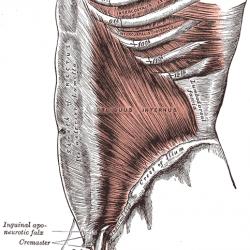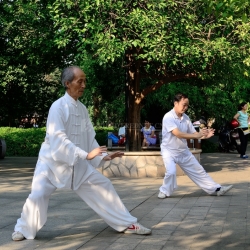An Accredited Dermatologist Explains The Top Causes Of Hair Loss
Don’t worry too much if you are shedding some hair each day, and you don’t have to resort to looking for a doctor to fix the problem yet. It is normal to shed a hundred strands of hair every day. But when the amount of hair fall is more than average per day, it’s time to seek some help, preferably from an accredited dermatologist in Singapore.
Pattern hair loss is the most common hair disorder for both adult men and women. The condition progresses gradually and follows a pattern that you can easily recognize. Men usually experience baldness on the top of their head, and their hairline begins to recede. Women experience thinning hair that starts at the crown. The hair volume also diminishes slowly.
But, hair loss problems are not limited to the stated facts – there are other reasons for diminishing hair volume. A doctor will first explore the other possible reasons for the hair loss before prescribing the suitable treatment.
In this article, you can learn the leading causes of diminishing hair, the available treatments, and tips that you can do at home to prevent further hair loss.
Common Causes of Hair Loss
Here are the common causes of hair loss.
1. Alopecia Areata
Alopecia Areata often results in random loss of hair. It is a type of autoimmune disorder. In most cases, the strands that have fallen leave a bald patch that’s about the size of a quarter.
For most people, a few bald patches can be tolerable. But, not for those with extreme cases of alopecia areata. It can sometimes lead to utter hair loss, which is known as alopecia totalis. In extreme cases, hair loss extends to your entire body. A total body hair loss from head to foot is known as alopecia universalis.
Anyone may develop alopecia areata. The disease does not choose a gender or age to afflict. However, most cases happen before the patient turns 30 years old.
2. Pregnancy
After giving birth, some women may experience excessive hair loss. It happens because estrogen levels drop. Usually, there is nothing to worry about since it is only a temporary condition that resolves on its own within a year or less.
To help the hair get back to its normal condition, the following are the tips you can try:
- When washing the hair, use a volumizing shampoo followed by the same type of conditioner.
- Choose products that are specially developed for fine hair.
- Don’t use intensive conditioning shampoo or conditioner that is too heavy for thin hair.
- Don’t weigh your hair down and just apply the conditioner to the ends rather than near the roots.
3. Frontal Alopecia
This mainly affects women in the initial stage of menopause. It is usually not as severe as the other causes of hair loss. For this case, you may only need to use topical steroid lotion, which is the most typical treatment for this condition. Early detection can help a lot in bringing back all your lost hair.
4. Centrifugal Cicatricial Alopecia
This affects the area where hot combs, hair extensions, or hair coloring chemicals are applied. The front of the scalp is the most common area it affects. It is not easy to detect since the effects are gradual, just like pattern hair loss. In most cases, the effect is permanent.
To lessen the risk of dealing with this condition, pay attention to the amount of hair you shed after undergoing a hair salon procedure or service.
5. Scarring Alopecia
You can expect permanent hair loss if you have scarring alopecia. The inflammatory skin conditions – such as folliculitis, acne, and cellulitis – and skin disorders like lichen planus and some forms of lupus often leave scars that impede the regeneration of hair.
Hair strands that are tightly woven and pulled and hot combs application can lead to permanent hair loss.
6. Telogen Effluvium
The scalp has three hair types or stages, namely anagen (growing hair), telogen (resting hair), and catagen (dead hair). Telogen effluvium occurs when the telogen hair has acute shedding, which typically happens three months following a major stressful trigger. The trigger could be depression, severe illness, high fever, childbirth, or other events that lead to severe mental or physical stress.
This type of hair loss does not occur due to general stress. Excessive shedding of hairs, whether simply brushing or washing the hair, is the typical complaint of patients with this type of condition. They can also find hairs on their clothes and pillows.
The telogen phase and telogen effluvium are linked together. It is normal to have 5 to 10 percent of your hair in the telogen phase at least once. In telogen effluvium, fewer hairs enter the next stages when the anagen phase slows down. About 30 percent of hair follicles progress into the telogen phase. When this happens, expect hair shedding to take place.
When to See a Doctor
When you are worrying too much about the persistent hair loss of anyone in your family, you must go to your doctor immediately and ask for proper treatment. Women experiencing receding hairline should consult a doctor right away to avoid severe permanent baldness.
You also need to tell your doctor if you see patchy or sudden hair loss when washing or combing your hair or your child’s hair. It could be a symptom of an underlying condition, which needs a totally different treatment.
How Hair Loss is Diagnosed
Your dermatologist or attending physician can perform a physical examination to determine the root of your hair loss problem. Your medical history can also help a lot. In some cases, a change in diet does the trick. Your doctor may change the prescribed medications that you are currently taking.
Your doctor may take a biopsy of your scalp’s skin when he/she suspects that you have a skin disease or autoimmune disease. Remember that hair growth involves an intricate process. Determining the exact cause of your hair loss may take time.
Treatment Options for Hair Loss
Here are some of the treatment options for hair loss.
1. Topical Treatment
This involves the direct application of medication to the bald patch to deal with hair loss.
Some patients experience an increase in hair volume and significant hair re-growth. Take note that you can only see visible results after 1 or 2 years of diligent application of the prescribed medication. If you’re lucky, you may see improvement in half a year.
2. Oral Treatment (e.g. Anti-Androgen and Finasteride)
Oral treatment yields better results than topical treatment. It is also easy to follow. You will benefit a lot from the injection treatment if you have alopecia areata. The bio-stimulatory injection is also gaining recognition as an oral treatment for hair loss.
3. Hair Transplant
This is a popular surgical solution for thinning hair. It involves harvesting some hair strands from the permanently hair-bearing area of the scalp. The hair grafts will be transplanted to the bald patches. While this treatment cannot stop the cause of hair loss, it can return the volume of your hair almost immediately. You may still need to have your topical or oral medication.
More to Read:
Previous Posts:







